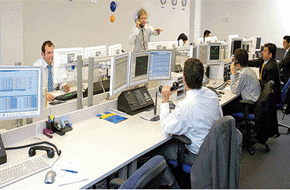
By Raiko Shareef
NZ Dollar
The NZD is effectively unchanged relative to yesterday morning, sitting at 0.8330 against the USD.
It slipped as far as 0.8290 in our day, and was likely saved from dropping further thanks to a strong AUD rally.
On the crosses, NZD/AUD pushed lower overnight, falling 0.6% to 0.8910.
Heading into the RBNZ meeting next week, investors are looking for some softening of the hawkish tone espoused in previous statements.
With the RBA yesterday looking to have cemented a view that the next rate hike will be higher.
At face value, this would support a lower NZD/AUD
While we are wary of a further extension lower (with 0.8850 the next technical level), we still expect the cross to revert higher into year end. For one thing, rate differentials still do not condone a sub-90 cent level.
As for relatively commodity prices, we observe the continued collapse in iron ore prices, which at $85.70 is the lowest level since 2009. Our forecast for NZD/AUD is 0.91 by year-end.
Today, the only local data due is QV house prices for August. While these data are generally not market moving, a negative headline see NZD quickly back beneath 0.83, as it would play with the grain of negative sentiment around NZ.
We still see strong support at 0.8260, and initial resistance at 0.8350.
To subscribe to our free daily Currency Rate Sheet and News email, enter your email address here.
----------------------------------------------------------
Majors
The USD gave back some of its gains yesterday, perhaps exhibiting some caution ahead of Friday’s non-farm payrolls outturn.
The AUD was an outperformer, topping the G10 leaderboard on solid GDP growth and RBA Governor Stevens’ remarks yesterday.
Bloomberg’s Dollar Spot Index slipped by 0.2%, despite fairly robust US data. Factory orders rose by 10.5% m/m in July, broadly in line with expectations. We suspect that the USD rally is taking slight breather ahead of the employment reports due at the end of the week. We expect to see continued USD strength well into 2015.
The AUD was the centre of attention overnight, gaining 0.8% against the USD in the overnight session. Yesterday, Australia’s Q2 GDP growth printed at +0.5% q/q, despite net exports dragging their heels. This was at the top end of market expectations, and in line with the RBA’s August forecasts.
However, the market paid more attention to RBA Governor Stevens’ speech in Adelaide. There, the Governor revealed that, while the RBA “may desire to see a faster reduction in the rate of unemployment, further inflating an already elevated level of housing prices seems an unwise route to try to achieve that.” This entrenches the consensus view that the RBA will be on hold for an extended period of time.
Overnight, most commentators were discussing the prospects of a ceasefire agreement between Ukraine and Russia, as press reports indicated some meeting of the minds between respective heads of state Poroshenko and Putin. The latter drizzled some cold water on the idea, cattily noting that Russia could not possibly agree to a ceasefire to a war that it was not part of. Cynics also point out that talk of a ceasefire conveniently appeared on the eve of a NATO summit in Wales, where Russia is expected to be slapped with further sanctions. Nevertheless, European equities outperformed on the day, with the Euro Stoxx 50 up 0.7%, in contrast to the S&P 500’s 0.1% slide.
As we head into the end of the week, the data calendar heats up. Today we have Australian trade balance and retail sales releases, ahead of the Bank of Japan meeting. Tonight, German trade data and US ADP employment data are due. But the main event will be the ECB’s policy announcement, with ECB President Mario Draghi’s subsequent press conference. The market remains positioned for some further easing, and failure to deliver might see a vicious snap higher in EUR.




We welcome your comments below. If you are not already registered, please register to comment.
Remember we welcome robust, respectful and insightful debate. We don't welcome abusive or defamatory comments and will de-register those repeatedly making such comments. Our current comment policy is here.